Our Long Overdue Tribute to the Bubbler Pipe
We don’t really talk about bubbler pipes nearly enough on this blog. But that changes today… we’re finally giving these (usually) little guys the attention they deserve. Existing as some halfway point between a handpipe and a bong, glass bubblers dare to give us the best of both worlds without demanding much in return. Here’s why we love a good bubbler, how to use these handy glass pieces and how to keep them in pristine, tip top condition.
Crisp, Clean Hits from Water Filtration
Probably the most obvious of the bubbler pipe’s benefits is its ability to offer up water filtration much like a bong. A bubbler is defined by a chamber located just beneath the bowl which allows water to catch toxins, contaminants and debris before they reach your mouth. It’s a simple design, but also an effective one that allows for larger, more comfortable hits than what you’d expect from a pipe of the bubbler’s size. Some models even offer built-in percolators for silkier hits, though you’re much more likely to find these filtration aids in bongs.
Pocket-Sized Portability
Obviously, clean, crisp hits aren’t exclusive to the glass bubbler… we experience those same refreshing hits from bongs all the time. But it isn’t the water filtration on its own that makes a bubbler pipe so special. It’s the water chamber combined with the average bubbler’s conveniently portable size. Most glass bubblers are just a bit larger than your average spoon pipe, making them easier than your towering beaker bong to take with you on the go. There are a few obvious exceptions, like the enormous Dynamic XL Bubbler from Glass Distractions that’s more about reclining in your easy chair than hitting the town. But for most bubbler models, that combo of water pipe performance and hand pipe portability is at the heart of the design’s tireless popularity. Water pipe level smoothness anywhere we want? Sign us up!
No Assembly Required
Also like a spoon pipe, a bubbler is usually a self-contained piece without need of any additional accessories to function. While you can point to different parts of a bubbler pipe including the bowl, carb hole, and mouthpiece, these are typically part of the bubbler itself and cannot be removed. Unlike rigs which require a kit including a banger, torch, and dab tool in addition to the rig itself, a glass bubbler sets you up with everything you need with one simple purchase, often at an affordable price.
How to Use Your Bubbler Pipe
Using a bubbler pipe is similar (though possibly even simpler) than a bong. Just fill the water chamber with enough water to cover the base of the downstem to ensure smooth hits. Then, simply pack your bowl, light up and cover that carb on the inhale (though some bubbler pipe designs lack a carb hole). Water shouldn’t be left sitting in a glass bubbler since it's unhygienic and can stain the glass. While we think water filtration is definitely an integral element of the bubbler pipe experience, you could opt to use your bubbler as a dry pipe if you wanted some extra portable convenience. The results are no rougher on the throat than a spoon pipe. But we’d still recommend transporting it dry and adding water when you get to your destination.
The Different Faces of the Glass Bubbler
Bubblers can come in a variety of forms, though there are two that are much more common. The first is the free standing bubbler pipe and the second is the hammer bubbler, both perfectly exemplified in these old school glass bubbler designs from Eric Runes. Chachie Rodriguez provides us with some additional vibrant examples of the hammer design, praised for its relaxed, stable and supportive shape and its lengthy neck that lends itself to larger hits. But there are plenty of examples of artists exploring the bubbler model outside of these popular designs, such as Camper Glass’s cylindrical Sherlock bubbler and Shipley Glass’s take on the bubbler (which also doubles as a dab rig) inspired by the Japanese kendama toys. The bubbler pipe is a lot of things but “limited” is certainly not one of them.
How to Clean a Bubbler Pipe
So, if a bubbler pipe can’t be disassembled, how do you clean one? The process is pretty similar to how you’d clean a garden variety bong. You start things out by pouring the water from the chamber and giving the piece a good shake to rid it of any remaining droplets. If you have a rare bubbler pipe with a removable downstem, you'll need to remove it so that you can clean it on its own. Next you will want to rinse the glass bubbler beneath a stream of hot water, making sure to guide the stream through the pipe so that it can dislodge any trapped debris.
The Cleaning Solution Phase
A cleaning solution is necessary at this point, though it’s up to you whether you use a specially designed bong cleaner or create your own using high percentage isopropyl alcohol and salt. Fill your bubbler with the cleaning solution up to around the same point that you would normally pour water when using the piece. Let this solution sit in your bubbler for approximately 30 minutes. Most ResCaps won’t fit a bubbler snugly but you should be able to simply place your fingers in such a way as to block the holes at the bowl, carb and mouthpiece or stop them up with cotton balls or a plastic bag before vigorously shaking the bubbler pipe. At this point, you can dump the solution and give your bubbler a good rinse with hot water. If you notice any tenacious debris still holding on, you may wish to use an appropriately sized wire pipe cleaner to get in there and scrub away. Give your bubbler a final rinse and then dry it with a soft cloth so as not to scratch the glass. You can try air drying it too, though this is liable to leave marks from the moisture.
So, the next time you want that OG glass bong feel but have places to be and people to see, reach for a bubbler pipe. It’s hard to top smoother hits that never break your stride. And as sparkling water, hot baths, heady sodas and chewing gum have shown us… everything is better with bubbles!

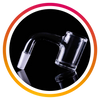
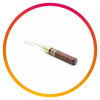

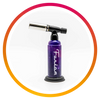
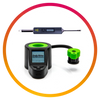
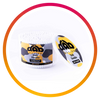


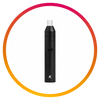

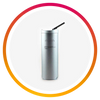
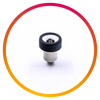
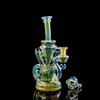
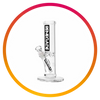
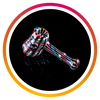
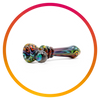
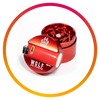
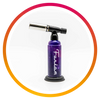
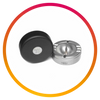
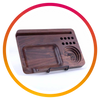
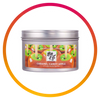




Comments
Leave a comment